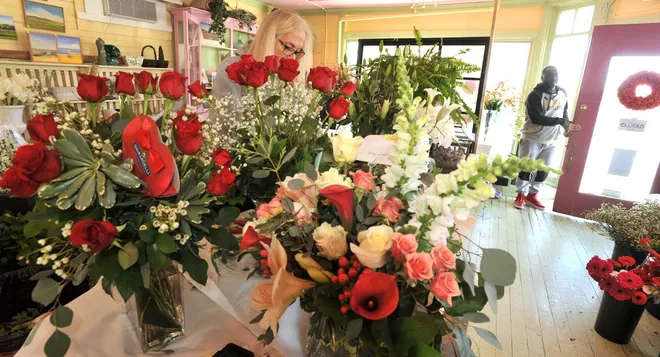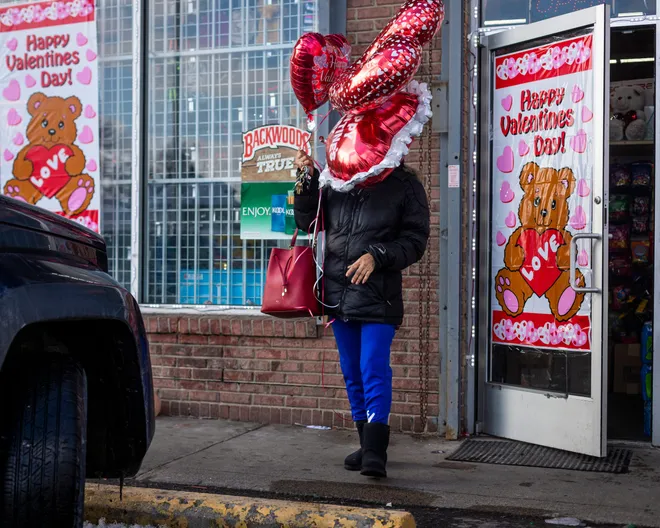Valentine's Day history: From pagan origins to endless promotions, with a little love
Valentine's Day heralds the midpoint of February when couples will exchange flowers and chocolates, head out for a romantic candlelit dinner and celebrate their enduring love.
Whether you find the holiday endearing, cliché or downright capitalistic, there's no denying that every Feb. 14, it's pervasive. But for as ingrained in our culture as Valentine's Day has become, precious few may understand the origins of the holiday.
Who is the holiday's namesake? How did it begin? And how did it grow into the commercialized celebration that it is today?
The truth is, no one really knows for certain. The origins of the day of romance remain shrouded in mystery, though some theories have grown to be widely accepted.
Here's what we know about how Valentine's Day came to be:

From where does the name 'Valentine' originate?
You'd be forgiven for assuming that the answer to this question is as simple as suggesting that it's named after St. Valentine.
In fact, the Catholic Church recognizes several saints named Valentine or Valentinus, all of whom became Christian martyrs, according to History.com.
As one legend goes, Valentine was a third-century Roman priest around 270 CE who continued to perform marriages even after Emperor Claudius II outlawed the rite for young men he preferred become soldiers. Valentine was eventually put to death when Claudius discovered what he was up to, according to History.com.
Other accounts hold that it was St. Valentine of Terni, a bishop, for whom the holiday was named, though it is possible the two saints were actually one person, according to Britannica.
Regardless of who should get the credit, an imprisoned Valentine is thought to have sent the first “valentine” greeting himself. A man bearing the name signed a letter “from your Valentine” to his jailer’s daughter, whom he had befriended and, by some accounts, even loved.

Valentine's Day pagan connections

One of the most common explanations is that Valentine's Day has its origins in the ancient Roman fertility festival of Lupercalia.
The debaucherous festival, which celebrated the coming of spring, included animal sacrifices and drunken revelry to honor Faunus, the Roman god of agriculture, as well as to the Roman founders Romulus and Remus. Men and women were also paired up together through a lottery system in matches that often led to marriage, according to History.com.
Lupercalia was celebrated for centuries in the middle of February, eventually transforming into a Christian celebration honoring St. Valentine as the Roman Empire became less pagan.
At the end of the 5th century, the celebration of Lupercalia was forbidden by Pope Gelasius I, who is often attributed with replacing it with St. Valentine’s Day, according to Britannica.

How did Valentine's Day become commercialized?

These days, Valentine's Day – celebrated in not just the United States, but Canada, Mexico, the United Kingdom, France and Australia – is the universal holiday for lovers to demonstrate their feelings.
By now, most with significant others who aren't planning to wait until the last minute this year have already gone out to buy the requisite greeting cards and chocolates. The flower arrangement deliveries have been arranged; dinner reservations made well in advance.
Americans are projected to spend $25.8 billion on Valentine’s Day this year, according to the National Retail Federation. More than half of consumers plan to celebrate and will spend an average of $185.81 per person, the group said.
Most of that money will go toward buying nice things for romantic partners, though people also report spending a decent amount on friends, co-workers, classmates and (yes) even pets.

Many of these money-spending traditions can be traced back to the Middle Ages.
You may have read Geoffrey Chaucer's "Canterbury Tales" in a high school English literature class, but the poet is also thought to be the source of our modern ideas about Valentine's Day, according to the New York Times. In a 1981 academic article, the late University of Kansas English professor Jack B. Oruch argued that Chaucer's 1375 poem “Parlement of Foules” was the first to record St. Valentine's Day as a romantic tradition.
First signs of rudimentary valentine notes began appearing much later, in the 1500s, according to Britannica. By the middle of the 18th century, it became common for friends and lovers of all social classes to exchange small tokens of affection or handwritten notes, History.com notes.
The first commercial valentines in the United States were printed in the 1840s thanks to Esther A. Howland, known as the “Mother of the Valentine.” Howland was credited as the first in the U.S. to sell mass-produced valentines made with elaborate lace, ribbons and colorful pictures known as “scrap," according to History.com.
By the year 1900, printed cards – many featuring the chubby arrow-launching cherub known as Cupid – began to replace written letters as printing technology improved thanks to a burgeoning company that would one day become Hallmark. Today, that same company estimates that 145 million Valentine’s Day cards are sent each year, making Valentine’s Day second only to Christmas in terms of card-sending holidays.
Eric Lagatta covers breaking and trending news for USA TODAY. Reach him at elagatta@gannett.com

Disclaimer: The copyright of this article belongs to the original author. Reposting this article is solely for the purpose of information dissemination and does not constitute any investment advice. If there is any infringement, please contact us immediately. We will make corrections or deletions as necessary. Thank you.

